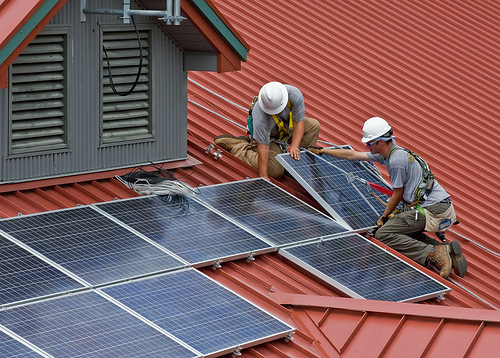Creating a sustainable long-term DPV market will require aligning the interests of utilities, solar companies , technology providers, and customers. With support from the U.S. Department of Energy’s SunShot Initiative, a new Rocky Mountain Institute report—Bridges to New Solar Business Models.
Opportunities to Increase and Capture the Value of Distributed Solar Photovoltaics—looks at enhancing legacy solar business models or building new ones by creating an expanded value pool, one that makes DPV affordable and accessible to far more customers, bridges beyond individual customer-centric DPV value to include value delivered to the grid and society, and allows the electricity grid’s myriad stakeholders to share in that value.
To date, a series of misalignments and market failures—including pricing structures and lack of performance-based incentives—have prevented electricity system stakeholders from taking a holistic approach to the deployment of distributed PV. Solar companies and utilities have focused on low-cost deployment onto the grid without accounting for the operational benefits and costs of integration into the grid . As a result, significant value potential is being left on the table.
For example, solar companies have worked in isolation to reduce the pre-interconnection components of distributed PV cost, such as installation labor efficiency. Further cost reductions are possible, but the most significant of them will require involvement from both solar companies and utilities together to achieve, such as with streamlined site identification, PII, and customer acquisition.
Solar Company Role: Solar companies coordinate site selection with utilities and design and install projects on the distribution system where they can provide high net value. The solar companies would work in a competitive market for projects, either responding to utilities’ RFPs or installing projects based on utility pricing mechanisms.
Solar Company Role: Solar companies sell broader energy services to customers via technology packages the utility has screened and approved. Revenues could come from the company’s ability to package DPV with complementary technologies, increasing revenue per customer and expanding the potential market to include customers who see less risk if the technology package has utility approval.

Moving forward, to refine and implement innovative solar business model solutions across the U.S. will require direct engagement from regulators, utilities, and solar companies. This will include assessing current abilities to identify value and customer needs and developing multi-stakeholder processes for assessing value.

















